Journal of Novel Physiotherapy and Physical Rehabilitation
Comparison of the effectiveness of proprioceptive and isometric exercises in Patients of knee osteoarthtitis: A randomized control trail
Sana Naqi1, Aadil Ameer Ali2*, Mahnoor Bugti3, Naseebullah Sheikh2, Muhammad Khan Bugti4, Shahmeer Chandio2, Amjad Hussain5, Muhammad Ishque MR5 and Taufiq Ahmad5
2Institute of Physiotherapy & Rehabilitation sciences, Shaheed Mohtarma Benazir Bhutto Medical University, Larkana, Pakistan
3Hayat Institute of Rehabilitation Medicine, Karachi, Pakistan
4Department of Physiotherapy, Shaheed Mohtarma Benazir Bhutto Institute of Trauma, Karachi, Pakistan
5Faculty of Pharmacy & Health Sciences University of Balochistan, Quetta, Pakistan
Cite this as
Naqi S, Ali AA, Bugti M, Sheikh N, Bugti MK, et al. (2021) Comparison of the effectiveness of proprioceptive and isometric exercises in Patients of knee osteoarthtitis: A randomized control trail. J Nov Physiother Phys Rehabil 8(1): 014-019. DOI: 10.17352/2455-5487.000087Objective: Assessment of the effectiveness of proprioceptive and isometric exercises in patients of knee osteoarthritis (OA).
Methods: The experimental study was conducted among the 40 patients who had confirmed diagnosis of knee OA. The 40 patients were randomized into separate two groups A & B. The group A received proprioceptive exercise, whereas group B were given the isometric exercises. The data was collected before and after the treatment by using the visual analogue scale for assessing the pain intensity, whereas the analogue goniometer was used for assessing the range of motion of knee joint. After collection, the data was analyzed by using statistical packages for social sciences (Spss) version 22.
Results: Patients of group A were heaving the mean age of (45.24 ± 11.52) and the patients of group B were having the mean age of (50.25 ± 12.12). Among the patients of group A, after the treatment the Knee range of motion was (113, ± 7.042), whereas among the patients of group B that was (107, ± 6.601). During the check of Vas scale, group A patients reported (4.01, ± 1.197) and group B reported (3.69, ± 1.054). Proprioceptive and isomeric exercises were statistically significant (p<0.05) to flexion range of motion and pain intensity, separately.
Discussion: In current study the both exercises (proprioceptive & isometric were significant in the management of Knee OA patients. Furthermore the proprioceptive exercises were found significant in enhancing the range of motion of knee joint), while the isometrics gave good results in pain management.Introduction
Osteoarthritis (OA) is portrayed by the breakdown of ligament in joints. A ligament crumbles; the bones of the joint start to run against each other, causing solidness and torment, which frequently debilitates development. For the most part OA harms the menisci, tendons and muscles. The bone or ligament parts may skim in the joint space, causing disturbance and explicit joint torment. Bone spikes, or osteophytes, may likewise create, causing extra torment and conceivably harm to the encompassing tissues. Osteoarthritis is named an essential and optional OA [1,2]. It most commonly affects the joints in the knee, hands, feet, spine and is also relatively common in weight bearing joints such as the knee and hip joints. Predominance OA at singular joint locales (remarkably knee, hip and hand) shows steady age-related expansions in pervasiveness. Notwithstanding, indicative OA is certainly not an unavoidable outcome of maturing. In spite of the fact that commonness of OA ascends in recurrence with age, it influences considerable quantities of individuals of working age. OA of the knee is more normal in women’s than in men. Universally, an expected 10%-15% of grown-ups more than 60 have some level of OA [2,3]. The movements have been showed up with x-bar confirmation in the joints of 40–60 percent of the general population past 35 years of age. This rate increments with age, coming to however much 85% in those people matured more than 75. It routinely start after the age of 40 and progress continuously, with radiographic verification of the ailment present in the vast majority of the general population by 65 years of age and in around 80% of the general population age 75 years and more prepared [4]. The cause of joint pain in OA is not well understood but the basic risk factors incorporates corpulence, past knee injury or medical procedure, and word related bowing and lifting while, the Systemic danger factors incorporate factors like age, identity, sexual orientation and hereditary. Expanded age is a danger factor to expanded occurrence of OA in weight-bearing joints [5,6]. Weight has been demonstrated to be related with an expanded danger of occurrence knee OA in a few examinations. Past knee injury is likewise been advised as a contributing variable for occurrence knee OA [7]. In pharmacological management the NSAIDs are frequently being used to relieve the pain, whereas in the physiotherapy the electrotherapy (tens, ultrasound) is being used widely for the pain management, whereas the isometrics and proprioceptive Excercise are being used for the strengthening of muscles around the knee joint. Proprioceptive training is a significant part of the restoration following tendon remaking. The proprioceptive preparing through stabilometry (preparing on a flimsy board) altogether diminished scenes of the joint “giving way” [8,9]. However the Strengthing practices are essential for the strengthing of muscle around the knee joint, Furthermore the quadriceps musculature is one of the regular factors that has been seemed to impact the knee joint limits. It is clear that lower furthest point strength has a significant job in knee joint stun lessening during weight bearing exercises. There is expanded danger of improvement or movement of illness because of more noteworthy or uncontrolled stacking on the joint; subsequently, quadriceps strength should be considered in the investigation of knee OA [1,10,11,12].
Methodology
Study design, settings and duration
A positive randomized control study was conducted from January to June 2018, and data was collected from different Government hospitals of Karachi (Jinnah Post Graduate Medical Center, Dr.Ruth K.M. Pfau Civil Hospital).
Sampling
The study was conducted on 40 patients which were randomized into two equal groups. Group A and group B. The patients of group A were given the proprioceptive exercises, whereas, the patients of group B were given the isometric exercises. Patients with both genders (male & female), age between 35-55 years , who can walk on heels and toes, suffering from symptoms more than 3 months with clinically confirmed diagnosis of mild to moderate osteoarthritis and willing participate were included in the study. While, patient with any malignancy, above 55 years of age, with previous history of surgery , patient who had intra-articular injection or having any systemic disease which make them unable to walk or stand and not willing to sign inform consent were excluded.
Data collection tool
1. Vas scale; it’s a scales which is widely used for the assessment of pain. It consists of 0 to 10 score, in which 0 indicates no pain, 5 indicates the moderate pain and 10 to extreme pain.
2. Knee Flexion range of motion was measured by using analogue Goniometer: The normal range for the flexion of knee joint is 0- 1200 ,whereas 0-170/1800 for extension(Ersoz, Ergun, & rehabilitation, 2003) [13].
Data collection procedure
Group A was receiving Proprioceptive exercises and Group B was receiving isometric exercises.. The Study was continuing for 4 weeks and a total number of 24 treatment sessions were given to each patient with 6 sessions per week. The Assessment of the patients was done at the beginning of 1st Session and at the end of treatment of 24th Session day.
Group A
In group A a set of proprioceptive exercise for 24 sessions were given continuously, which were as follows.
I. One leg balance: It included remaining on influenced lower extremity with loose, upstanding stance and the other leg flexed at knee, hip and lower leg. This position was held briefly, trailed by rest for 10 to 20 seconds, and was rehashed twice more. After a short rest, three comparative redundancies were done with the unaffected lower extrimity.it was same like one leg balance, then again, actually the member was approached to keep eyes shut while playing out the daily schedule, and afterward was rehashed twice.
II. Blind advanced one leg balance: it was same like one leg balance, then again, actually the member was approached to keep eyes shut while playing out the daily schedule, and afterward was rehashed twice.
III. Toe walking: Weight has been exhibited to be connected with an extended risk of event knee OA in a couple of assessments. Past knee injury is in like manner been prompted as a contributing variable for event knee OA.
IV. Heel walking: Strolling for 20 meters on heel with toes pointing straight ahead, strolling on heels with toes calling attention to and afterward with toes pointing in. After a brief rest, the strategy was finished again.
V. Cross body leg swings: Slanting possibly forward with hands on a divider for help and weight on affected leg, other leg was swing before the body. This was repeated for different occasions and after a compact rest, 15 relative emphases with the unaffected leg as weight-bearing limb were performed.
Group B
In Group B the Isometric quadriceps rehearses were given to individuals in long sitting circumstance with hands at side, with a piece of towel put under affected knee. The subject was by and by drew nearer to press the towel down and hold it till count of ten and subsequently loosen up and go over for 10 redundancies followed by inverse side knee. 10 emphases for each meeting. (One session per day for 24 session of treatment.)Data analysis procedure
Descriptive statistics; categorical variables were measured as frequency and percentage where continuous variables were expressed as mean standard deviation. Data was analyzed by using Statistical Package for Social Sciences (SPSS) version 23.
Ethical concern
Approval was taken from the respective medical superintendent of hospitals. The ethical approval for this study was taken from the ethical review committee of Isra University. During study Informed patient consent was received, patients were convinced about their confidentiality, responses and their right to withdraw anytime from study.
Results
Demographic details of Group A (proprioceptive exercises) & Group B (isometric exercise Demographic Characterstics are described in Figure no 1, which show that in group A patients were having mean age of (45.24+ 11.524) along with the body mass index of (30.08 + 6.844).while in group B patients having mean age of (50.25+ 12.123) along with the body mass index of (28.73 + 5.879).
Comparison of treatment (Before & After) of visual analogue scale score and Range of motion.
Table 1 describes that before the start of treatment the patients from Group A were having (6.70, +1.059) visual analogue scale score, whereas the flexion range of motion was (104, +8.055). After checking the post treatment status we found that patients were having (4.01, +1.197) visual analogue scale score, whereas the flexion range of motion was (113, +7.042). Although the, before starting of the treatment the patients of group B having (5.60, + 0.966) visual analogue scale, and flexion range of motion (101, +7.180), whereas in after treatment status we found (3.69, +1.054) visual analogue scale score, and the flexion range of motion was (107, +6.601). These p value (<0.05) was used to show the significant status.
Proprioception Vs Isometric exercises results
The comparison of results of Proprioception Vs Isometric exercises are shown In Figure 2 which shows that the both exercises were enough effective but the patients who were in group A they experienced the more increase In flexion range of motion as compare to group B whereas the group b patients experienced decreased range of motion.
Discussion
The effectiveness of proprioceptive exercises versus isometric exercises was assessed in patients with knee osteoarthritis, in current study the different parameters being observed including pain intensity through visual analogue scale and range of motion through analogue goniometer,. The results of the present study showed significant improvements in all the above mentioned parameters among both groups. The Vas score was more statistically significant in the Isometric group (Group A), while the range of motion more statistically significant in proprioceptive group (Group B).
The study was conducted and compared the impacts of proprioceptive and isometric activities on torment force and trouble in patients with knee osteoarthritis and discovered conflicting outcomes [11,14]. He discovered critical outcomes in diminishing agony force and improving actual capacity in the proprioceptive gathering when contrasted with isometric gathering by accomplishing the scope of movement. The result of pain intensity is not consistent with the present study as it is more significant in isometric group but the physical function Range of motion was improved in proprioceptive group. In another study conducted by , Küçük et al. who assessed the Visual Analogue Scale -scores during the night, climbing stairs or walking; Western Ontario and McMaster Universities Osteoarthritis Index sub scores of pain, stiffness and function. Improvements in the pain scores during daily activities including walking, climbingup and down stairs, and night pain were observed in all groups (isokinetic, aerobic and isometric) after the interventions that is consistent with present study, but the difference did not reach the statistical significant value while in the present study WOMAC sub score of pain, stiffness and function shows statistical significant results in both isometric and proprioceptive groups [15,16]. Huang et al. in his study contrast the quadriceps utilitarian exercise and isometric compression in the treatment of knee osteoarthritis along with this he additionally checked the Visual Analog Scale score and the Western Ontario and McMaster Universities Osteoarthritis Index score that showed huge alleviation in torment multi month after treatment in the experimental group (P < 0.05), however insignificant help in the benchmark group. Following one month of treatment, negligible joint capacity improvement was likewise seen in the experimental group (P > 0.05), however huge improvement in the benchmark group (P < 0.05). At last at 3 months of treatment, improvement in relief from discomfort and knee joint capacity was seen in the experimental group than in the benchmark group, with a genuinely critical contrast (P < 0.05). These finding additionally reliable with the current examination that showed measurably critical upgrades in torment work in the proprioceptive gathering [17-19].
After that a study carried out and compared the impacts of Pilates and isometric activities on torment, useful incapacity and scope of movement in patients with knee osteoarthritis. The investigation showed stamped upgrades in torment power, practical incapacity and Lumbar ROM acquired in all the examination gatherings (Pilate practice bunch, Isometric exercise bunch and the transcutaneous electrical nerve Stimulation bunch). All result means showed huge enhancements in post-intercession. This is also consistent with the present study with improvement in pain, function and range of motion in both isometric and proprioceptive group [1,20].
Kumar et al. Investigated in his study about the impact of isometric exercise versus joined concentric-offbeat exercise preparing in patients with osteoarthritis knee. He discovered huge outcomes in Visual Analog Scale and Western Ontario and McMaster Universities Osteoarthritis Index scores in the two gatherings yet Group B was seen to be more critical better outcomes on both the scales after the treatment. Accordingly it was tracked down that isometric exercise when consolidated to concentric-flighty exercise preparing had more noteworthy improvement in decreasing agony and useful incapacity when contrasted with isometric activities alone [21,22]. A study conducted by Sarkar et al. to determine the Effects of obesity on quadriceps dynamic strengthening and isometrics exercise for the treatment of knee osteoarthritis patients. The results indicated that pain reduction was significantly equal in both obeses and non-obese groups but range of motion was found to be more significant (i.e including both flexion and extension) in non-obese group while in group B (obese) only flexion of the knee joint was significantly improved. So It was found that the isometric exercises was more effective for non-obese patients as the greater BMI may be a factor in increasing stress at knee joint during weight bearing[3,7]. These finding is consistent with the present study in which isometric exercises were shown to be effective in increasing range of motion at knee joint. A study conducted and decide the Effects of isometric quadriceps muscle reinforcing exercise on persistent osteoarthritis of the knee in which agony and scope of movement of the knee joints were surveyed and followed-up week by week for about a month and a half. Improvement in the activity bunch was seen from the four weeks that expanded step by step during the treatment and toward the finish of about a month and a half treatment, a huge improvement was appeared in the torment and scope of movement at the knee joint [5,11,23].
Conclusion
The current study disclosed that both (Proprioceptive and Isometric) exercises had significant effects on decreasing the pain and increasing the range of motion in patients with knee osteoarthritis. However the isometric exercises had shown good effects in decreasing the range of motion while proprioceptive exercises had significant effects on increasing range of motion of knee joint.
Limitation
As the study was conducted among the already diagnosed patients of Knee osteoarthritis, because of that no any severity scale was used among the patients. Only Knee range of motion and Visual analogue scale was used to compare the effectiveness of exercises.
We acknowledge the support of physical therapist who have participated in this study.
- National Collaborating Centre for Chronic Conditions (UK)[Corporate Author] (2008) Osteoarthritis: national clinical guidelines for care and management in adults. Link: https://bit.ly/3oz5Pp5
- Felson DT, Lawrence RC, Dieppe PA, Hirsch R , Helmick CG, et al. (2000) Osteoarthritis: new insights. Part 1: the disease and its risk factors. Ann Intern Med 133: 635-646. Link: https://bit.ly/3fBvSbf
- Atkinson K, Coutts F, Hassenkamp AM (2005) Physiotherapy in orthopaedics. 221-226. Link: https://bit.ly/3v7WUgE
- Wilkerson GB, Nitz AJ (1994) Dynamic ankle stability: mechanical and neuromuscular interrelationships. 3: 43-57. Link: https://bit.ly/3ox4XRK
- Saarimaa P, Linksmuolis T, Mäkelä M, Tervala SK (2013) The Effect of Knee Osteoarthritis on Functional Ability and Quality of Life in Finnish and Lithuanian elderly women. Link: https://bit.ly/3bHuKl3
- Van der Esch M, Steultjens M, Harlaar J, Wolterbeek N, et al. (2008) Varus–valgus motion and functional ability in patients with knee osteoarthritis. Ann Rheum Dis 67: 471-477. Link: https://bit.ly/3fwoy0l
- Ali AA, Haq N, Chang K, Naqi S, Rafique M, et al. (2019) Impact of obesity on frailty in older population of Karachi. Pakistan 2: 52-54. Link: https://bit.ly/3bHuq5P
- Farì G, Santagati D, Pignatelli G, Scacco V, Renna D, et al. (2021) Collagen Peptides, in Association with Vitamin C, Sodium Hyaluronate, Manganese and Copper, as Part of the Rehabilitation Project in the Treatment of Chronic Low Back Pain. Endocr Metab Immune Disord Drug Targets. Link: https://bit.ly/2Sb4316
- van Spil WE, Szilagyi IA (2020) Osteoarthritis year in review 2019: biomarkers (biochemical markers). Osteoarthritis Cartilage 28: 296-315. Link: https://bit.ly/3fyxMcl
- Barrack RL, Lund PJ, Skinner HB (1994) Knee joint proprioception revisited. 3: 18-42.
- Ali AA, Sheikh N, Chughani V, Hussain A, et al. (2021) Comparision of Effectiveness of Isometric and Stretching Exercise in Pain. Management among the Forward Head Posture Patients 15: 84.
- Haq N, Ali AA, Riffat Y, Razaque G, Nasim A, et al. (2020) PMS76 assessment of health-related quality of life in patients of knee osteoarthritis in quetta, pakistan. 23: S229. Link: https://bit.ly/2RpeMFv
- Ersoz M, Ergun S (2003) Relationship between knee range of motion and Kellgren-Lawrence radiographic scores in knee osteoarthritis. Am J Phys Med Rehabil 82: 110-115. Link: https://bit.ly/3bBT4EU
- Ojoawo AO, Olaogun MO, Hassan MA (2016) Comparative effects of proprioceptive and isometric exercises on pain intensity and difficulty in patients with knee osteoarthritis: a randomised control study. Technol Health Care 24: 853-863. Link: https://bit.ly/3hMFodY
- Berger MJ, McKenzie CA, Chess DG, Goela A, Doherty TJ (2012) Quadriceps neuromuscular function and self-reported functional ability in knee osteoarthritis. J Appl Physiol 113: 255-262. Link: https://bit.ly/3v3hS0o
- Kurrat HJ, Oberländer WJ (1978) The thickness of the cartilage in the hip joint. J Anat 126: 145-155. Link: https://bit.ly/33YZvxB
- Hortobágyi T, Garry J, Holbert D, Devita P (2004) Aberrations in the control of quadriceps muscle force in patients with knee osteoarthritis. Arthritis Rheum 51: 562-569. Link: https://bit.ly/3valCxe
- Lephart SM, Pincivero DM, Giraldo JL, Fu FH (1997) The role of proprioception in the management and rehabilitation of athletic injuries. Am J Sports Med 25: 130-137. Link: https://bit.ly/33X3KJV
- Lin DH, Lin CH, Lin YF, Jan MH (2009) Efficacy of 2 non-weight-bearing interventions, proprioception training versus strength training, for patients with knee osteoarthritis: a randomized clinical trial. J Orthop Sports Phys Ther 39: 450-457. Link: https://bit.ly/3v88w3l
- Haq I, Murphy E, Dacre J (2003) Osteoarthritis. Postgrad Med J 79: 377-383. Link: https://bit.ly/3vh15al
- Blackburn TA (2000) Journal of Sport Rehabilitation. 35: 478.
- Chaganti RK, Lane NE (2011) Risk factors for incident osteoarthritis of the hip and knee 4: 99-104. Link: https://bit.ly/3bEWUND
- Lin DH, Lin YF, Chai HM, Han YC, Jan MH (2007) Comparison of proprioceptive functions between computerized proprioception facilitation exercise and closed kinetic chain exercise in patients with knee osteoarthritis. Clin Rheumatol 26: 520-528. Link: https://bit.ly/3ox2nv2
Article Alerts
Subscribe to our articles alerts and stay tuned.
 This work is licensed under a Creative Commons Attribution 4.0 International License.
This work is licensed under a Creative Commons Attribution 4.0 International License.
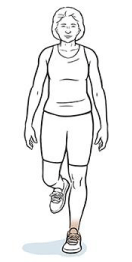
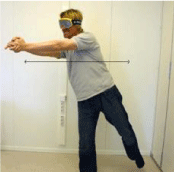
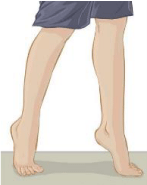
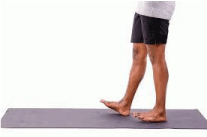

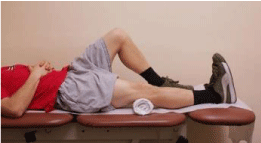

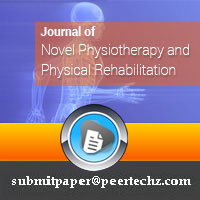
 Save to Mendeley
Save to Mendeley
